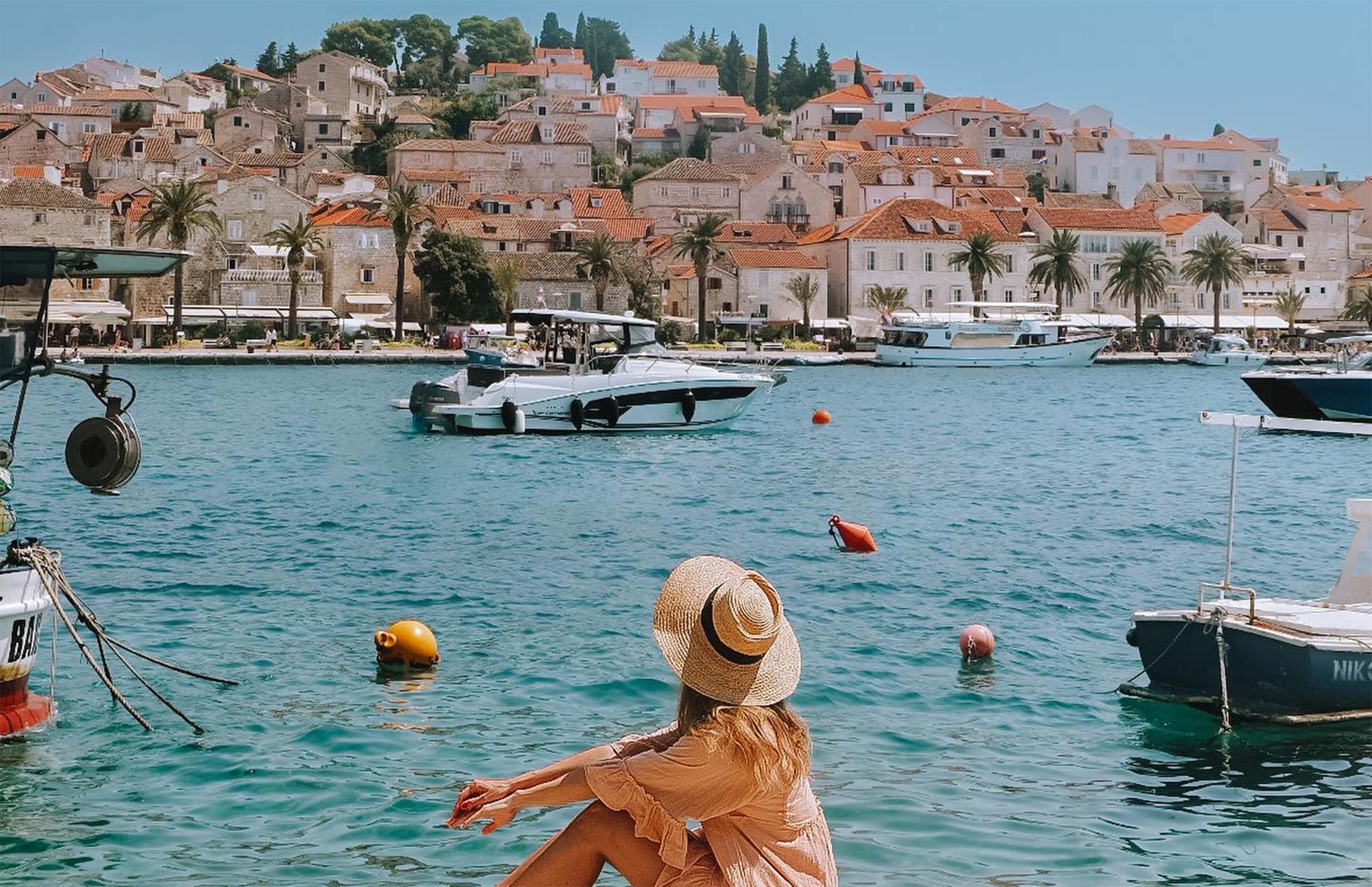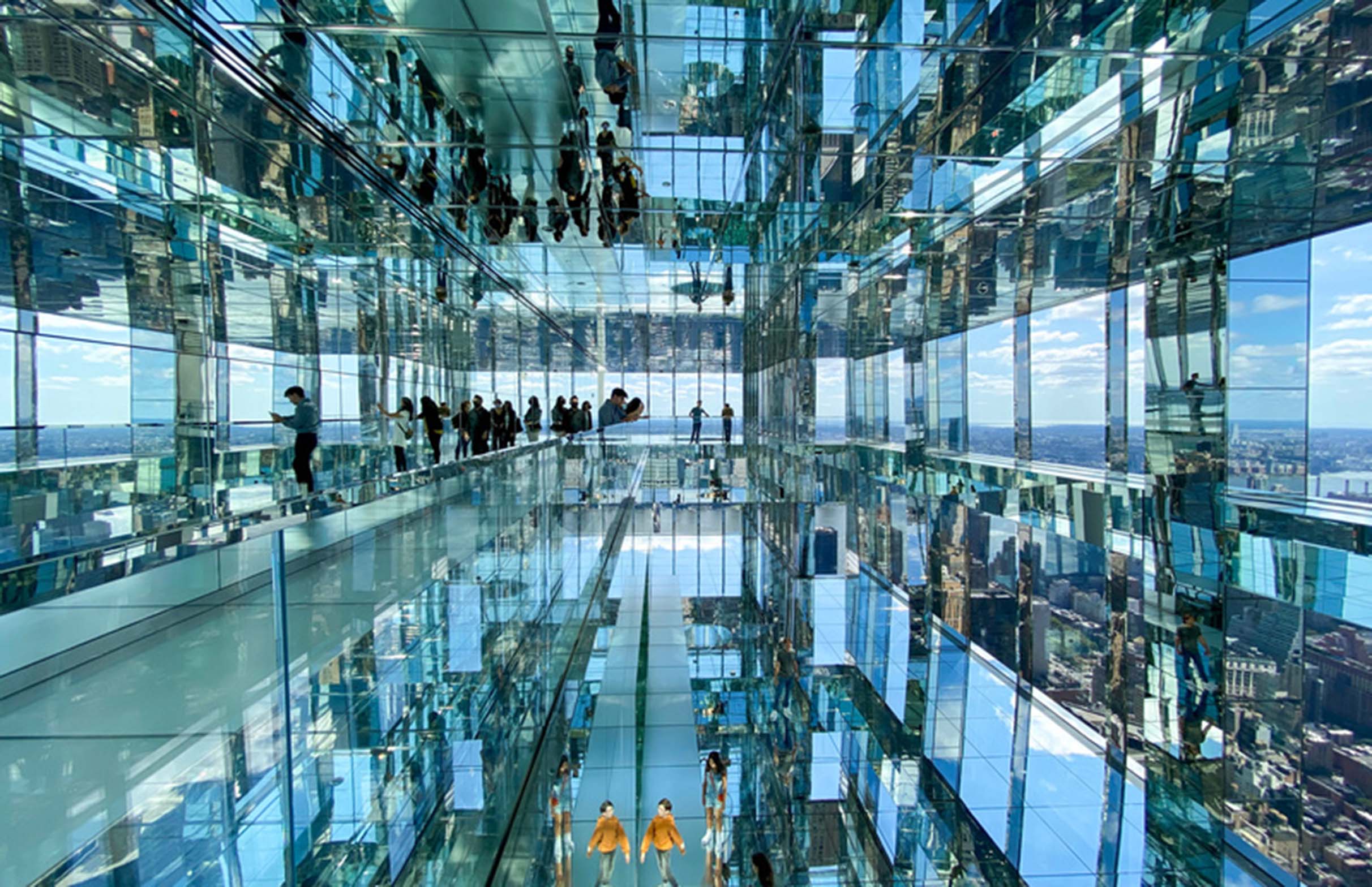Table of Contents
- Roaming the Ancient Alleys: My Adventures in the Old Town
- Diocletian’s Palace: A Window into Antiquity
- Discovering Krka National Park: Nature’s Gift
- Sibenik: A Hidden Gem on the Adriatic Coast
- Omis: Where Adventure Meets the Sea
My journey in August led me to the captivating city of Split, Croatia. Nestled along the sun-kissed Adriatic coast, Split is a place where the past seamlessly intertwines with the present. I invite you to join me on a voyage through time, delving into the rich cultural heritage of Split, including the enchanting Old Town, the iconic Diocletian’s Palace, and my top three favorite destinations: Krka National Park, Sibenik, and Omis.
1. Roaming the Ancient Alleys: My Adventures in the Old Town
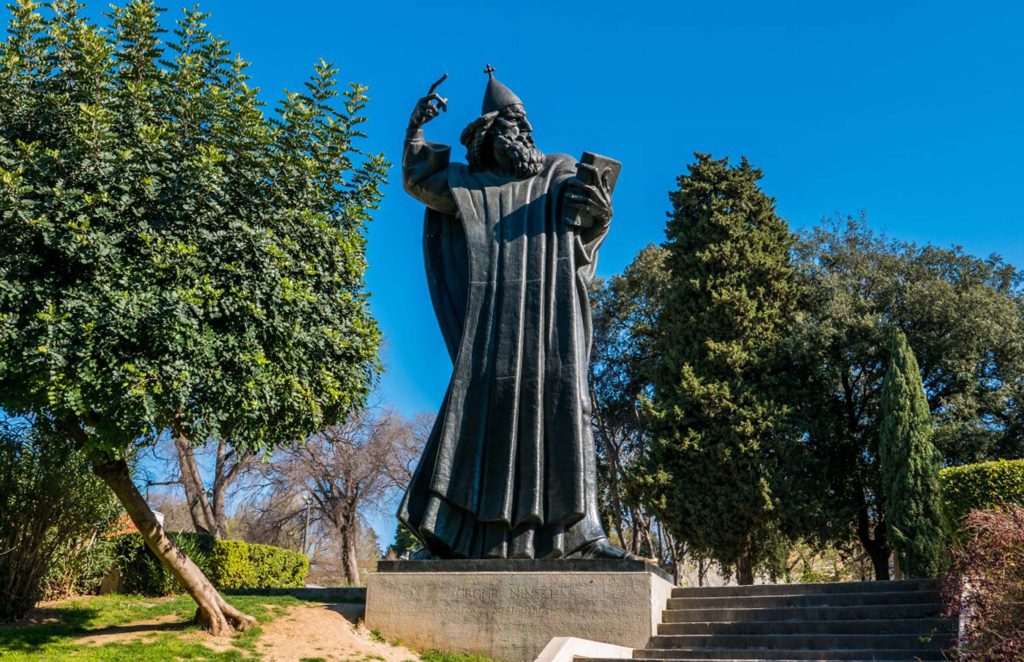
Lost in Time
My adventure began in the heart of Split, within the captivating Old Town. Stepping onto the weathered cobblestones of Diocletian’s Palace felt like entering a time portal. The labyrinthine layout of the Old Town beckoned me to explore its secrets, and I was more than willing to oblige. Wandering through these ancient alleys, I often found myself lost in the maze, stumbling upon hidden gems and unexpected surprises.
The Old Town’s streets, narrow and winding, seemed like a maze designed to get lost in. I discovered that this was the best way to explore its hidden treasures. Each corner turned, every archway passed through, revealed a new facet of the city’s history. It was as if the very stones beneath my feet held the echoes of centuries of life.
Savoring Dalmatian Delights
Amidst my explorations, the irresistible aroma of Dalmatian cuisine wafted through the air. The Old Town is dotted with quaint restaurants and konobas, each offering a delectable array of seafood and local specialties. One evening, I savored the flavors of freshly caught Adriatic fish and the tender embrace of grilled octopus in a charming konoba tucked away within the palace’s walls. It was a culinary experience that left an indelible mark on my taste buds.
The dining experience in Split was nothing short of a gastronomic delight. I found that the Dalmatian cuisine embraced simplicity and freshness. The seafood, in particular, was a revelation. Whether it was the perfectly grilled sea bass or the exquisite black risotto infused with squid ink, every dish celebrated the Adriatic’s bounty. Dining in the open-air courtyards of the Old Town, under the starlit Mediterranean sky, added a touch of magic to each meal.
Street Performers and Evening Delights
As the sun dipped below the horizon, the Old Town transformed into a stage for mesmerizing street performers. Musicians serenaded passersby with melodious Croatian tunes, skilled magicians enthralled the audience with their illusions, and artists showcased their talents on the cobbled squares. I found myself enchanted by the vibrant street culture and the lively atmosphere that embraced the city after dark.
The evenings in Split were a celebration of life. The streets came alive with performers of all kinds, from musicians and dancers to fire-eaters and living statues. It was a testament to the city’s vibrant spirit and the way it embraced both tradition and modernity. I often found myself lingering in the Old Town’s squares, sipping local wine and enjoying the captivating performances.
2. Diocletian’s Palace: A Window into Antiquity
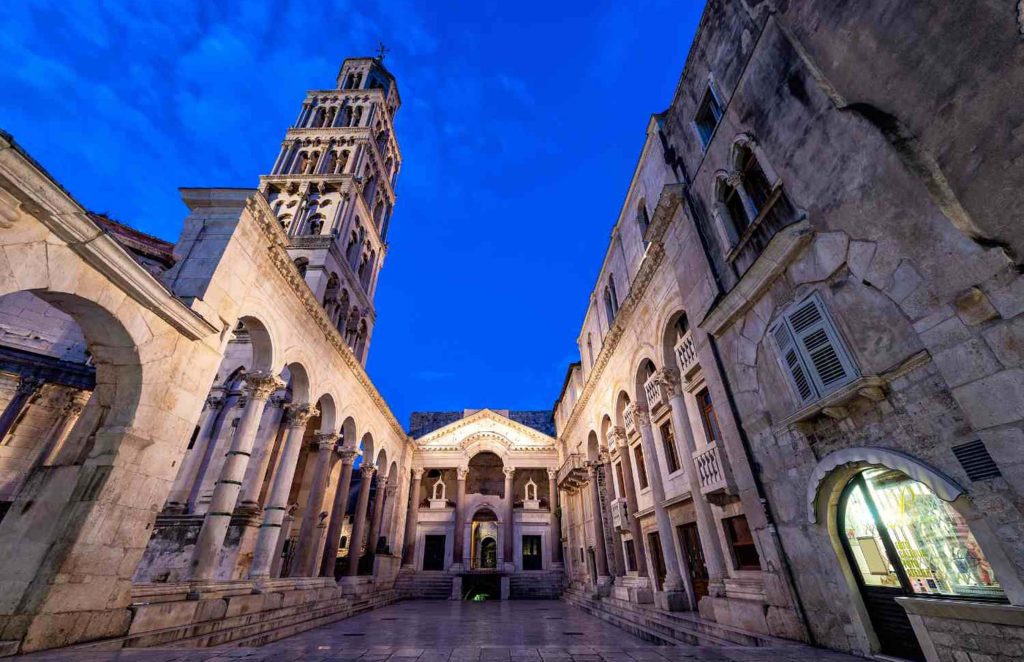
An Architectural Marvel
The centerpiece of Split’s cultural heritage is undoubtedly Diocletian’s Palace. Constructed in the 4th century AD as a retirement retreat for the Roman Emperor Diocletian, this UNESCO World Heritage Site is a living testament to the grandeur of Roman architecture. As I wandered through the palace’s hallowed halls and atmospheric courtyards, I couldn’t help but marvel at the preservation of history. The palace isn’t merely a relic; it’s a thriving, breathing part of Split.
The palace, with its towering walls and intricate stone carvings, is a masterpiece of Roman engineering and craftsmanship. The fact that it has stood the test of time and continues to be an integral part of the city’s life is a testament to the enduring legacy of the Roman Empire. Walking through the palace’s Peristyle, I could almost imagine the emperor himself presiding over grand ceremonies in this very square.
The Subterranean Secrets
One of the palace’s most intriguing facets lies hidden beneath its surface—the subterranean chambers, tunnels, and cellars that once served a myriad of functions. Descending into these shadowy depths was like journeying back in time. The reverberations of history seemed to whisper through the ancient stones, creating an ambiance that would enthrall both history aficionados and curious wanderers.
The subterranean chambers revealed a different side of palace life. These dimly lit passages once housed servants, soldiers, and storage for the palace above. Today, they offer a glimpse into the complexity of the structure and the ingenuity of its design. As I explored these underground labyrinths, I marveled at how well-preserved they were, and the sense of history became almost palpable.
Practical Information
- Ticket Price: Adults – €100 (approximately $15), Children – €30 (approximately $5)
- Opening Hours: 8:00 AM to 8:00 PM (May to September), 8:00 AM to 7:00 PM (October to April)
Diocletian’s Palace is open year-round, but I would recommend visiting during the shoulder seasons to avoid the crowds. The mornings, before the tour buses arrive, are a particularly peaceful time to explore the palace’s nooks and crannies.
3. Discovering Krka National Park: Nature’s Gift
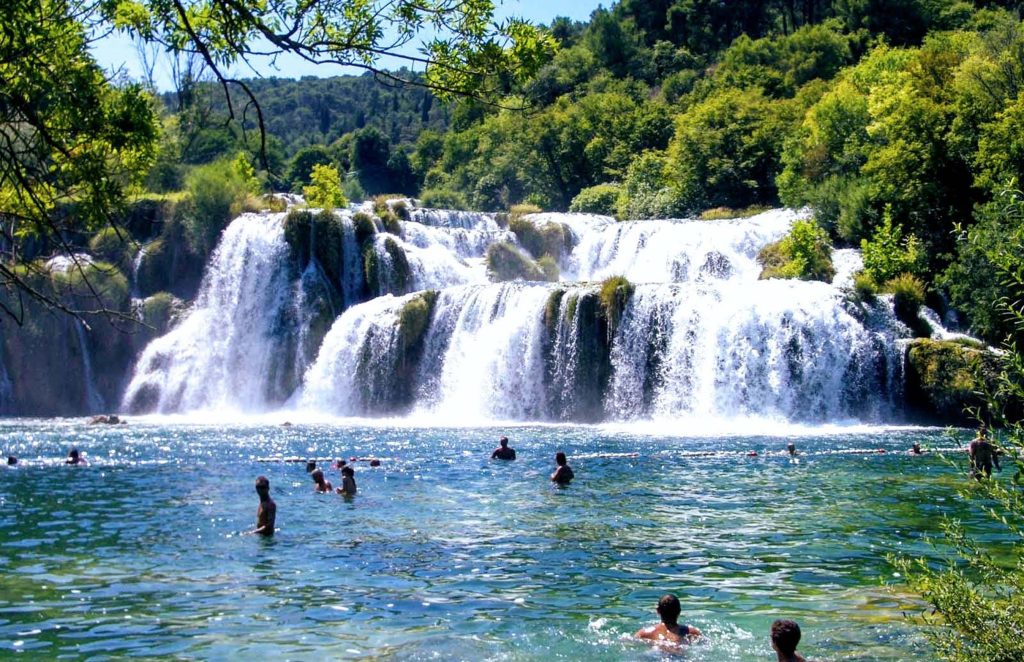
A Natural Wonderland
My exploration of Split extended beyond the city’s boundaries to the pristine Krka National Park, a short drive away. This verdant sanctuary is a testament to the splendors of nature. The highlight of my visit was the ethereal Skradinski Buk waterfall, where I had the privilege of swimming beneath the crystal-clear waters cascading from above.
Krka National Park is a haven for nature lovers, and Skradinski Buk is its crown jewel. The waterfall, with its cascading tiers and emerald pools, is a sight to behold. I couldn’t resist the temptation to take a dip in the cool waters, surrounded by the lush greenery of the park. It was a moment of pure serenity and a refreshing escape from the summer heat.
Riverside Strolls and Tranquil Lakes
Krka National Park boasts a network of well-maintained wooden pathways that wind through lush forests and alongside the meandering Krka River. The park’s tranquil lakes and casc
ading waterfalls create a serene atmosphere, inviting visitors to immerse themselves in the beauty of the Croatian wilderness.
Walking through the park was a serene experience. The wooden pathways led me through dense forests and alongside the Krka River, where I could observe the park’s diverse flora and fauna. Birds chirped in the treetops, and the gentle gurgle of the river provided a soothing soundtrack to my exploration.
Practical Information
- Ticket Price: Adults – €13 (approximately $15), Children – €4 (approximately $5)
- Opening Hours: 8:00 AM to 8:00 PM (June to September), 9:00 AM to 5:00 PM (October to May)
To truly savor the park’s beauty and tranquility, I recommend arriving early in the morning or later in the afternoon. The midday hours tend to be busier with tourists.
4. Sibenik: A Hidden Gem on the Adriatic Coast
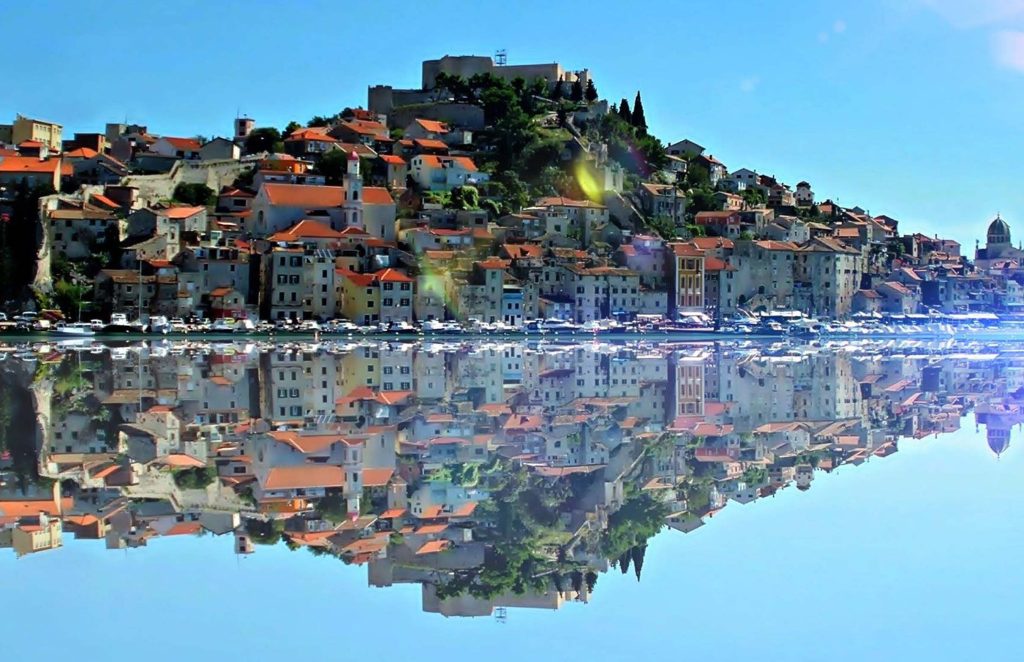
A Coastal Jewel
While Split often takes the spotlight, the coastal town of Sibenik is a hidden gem that should not be overlooked. Nestled along the Adriatic coast, this charming town is a showcase of medieval architecture and a testament to Croatia’s rich history. Strolling through its labyrinthine streets, I couldn’t help but fall in love with its unspoiled beauty.
Sibenik is a coastal jewel that has retained its authentic character. The town’s cobblestone streets wind their way through historic neighborhoods, past centuries-old churches, and alongside the azure waters of the Adriatic. Sibenik’s lack of massive crowds only enhances its allure, making it an ideal destination for travelers seeking a quieter, more intimate experience.
St. James’s Cathedral: A Masterpiece of Stone
The crowning jewel of Sibenik’s cultural heritage is undoubtedly the St. James’s Cathedral, a UNESCO World Heritage Site and an architectural marvel. As I approached the cathedral, its intricate facade, adorned with countless stone faces and ornate details, left me awestruck. This was a place where stone had been transformed into art, and every carving told a story.
The interior of the cathedral was equally impressive. Its soaring vaulted ceilings and elegant pillars created a sense of grandeur, while the soft light filtering through stained glass windows bathed the space in a warm glow. Climbing to the top of the bell tower offered panoramic views of Sibenik and the Adriatic beyond, a breathtaking reward for the ascent.
Practical Information
- St. James’s Cathedral Ticket Price: Adults – €27 (approximately $30), Children (7-18 years) – €16 (approximately $20)
- Opening Hours: 8:00 AM to 8:00 PM (June to September), 8:00 AM to 4:00 PM (October to May)
Sibenik is a perfect day trip from Split, located just about an hour’s drive away. Visiting in the morning allows you to explore the town’s attractions at a leisurely pace.
5. Omis: Where Adventure Meets the Sea

A Thrilling Paradise
My journey through Split’s cultural heritage would have been incomplete without a visit to Omis, a coastal town where adventure meets the sea. Nestled between the towering cliffs of the Cetina River canyon and the Adriatic coastline, Omis is a haven for outdoor enthusiasts and adrenaline junkies.
Omis offers a wide range of adventure activities, from zip-lining high above the Cetina River to white-water rafting through its rapids. For someone like me who craves adventure, this was a paradise waiting to be explored. I couldn’t resist the allure of the great outdoors and the promise of thrilling experiences.
Zip-lining and River Rafting
My adventure in Omis began with a heart-pounding zip-line ride high above the Cetina River canyon. As I soared through the air, the panoramic views of the canyon and the emerald river below took my breath away. It was an exhilarating experience that combined the thrill of flight with the beauty of nature.
Zip-lining was just the beginning. I later joined a white-water rafting expedition on the Cetina River, navigating its fast-flowing rapids and emerald pools. The river’s pristine waters and the rugged beauty of the canyon created a surreal backdrop for this adrenaline-fueled adventure. It was a day filled with laughter, excitement, and the shared camaraderie of fellow adventurers.
Practical Information
- Zip-line Price: Starting from €47 (approximately $55)
- River Rafting Price: Starting from €32 (approximately $38)
- Hiking: Various trails suitable for different fitness levels
As I bid farewell to the enchanting city of Split and its surroundings, I am left with a profound sense of appreciation for the cultural heritage, natural beauty, and adventure that define this coastal paradise. From the ancient alleys of the Old Town to the subterranean mysteries of Diocletian’s Palace, from the serene lakes of Krka National Park to the majestic St. James’s Cathedral in Sibenik, and from the adventurous spirit of Omis to the stunning landscapes that adorn the region, Split offers an array of experiences to savor.
This journey has been a reminder that history is not a distant memory but a living presence in the heart of Split. It’s a place where the past converges with the present, where the Adriatic breeze carries the whispers of emperors, and where every cobblestone tells a story. My hope is that this article serves as a guide and an inspiration for fellow travelers, urging them to explore the cultural heritage, natural wonders, and hidden treasures that await in this mesmerizing corner of Croatia.
As I carry with me the timeless treasures and unforgettable memories of my journey through Split’s historical charm, I am reminded that some places are not merely destinations; they are experiences that stay with us forever.

